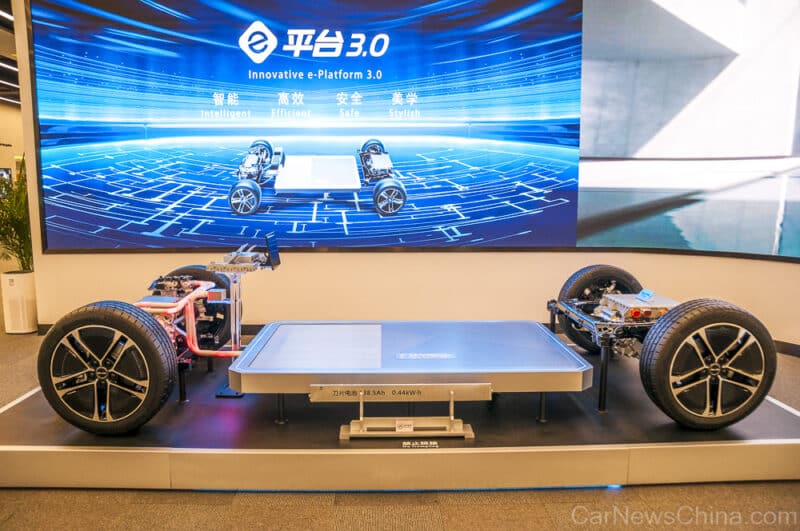BYD battery subsidiary FinDreams will launch a second generation version of its blade battery later this year, possibly in August. One of the key upgrades in the new battery will be the energy density which is expected to reach 190 Wh/kg.
The original blade battery introduced in 2020 revolutionized the EV industry by making cheaper lithium iron phosphate (LFP) batteries have power densities that made them competitive with NCM (nickel cobalt manganese) batteries. This was done by arranging the individual cells into a blade like arrangement within the battery packs hence the name blade battery. Such an arrangement increased the space utilization by 50% compared to existing LFP batteries at the time.
When introduced the first generation blade battery had an energy density of 140 Wh/kg which has since been increased to 150 Wh/kg.
BYD Chairman Wang Chuanfu revealed development of the new battery during a recent financial report communication meeting. Wang Chuanfu said that the second-generation blade battery will have a smaller size and lighter weight for the same endurance, and that power consumption will be reduced per 100 kilometers.
Fast Technology speculate that the second generation blade battery will help all-electric models exceed 1,000 kilometers CLTC range. Such a range would make cars fitted with them competitive with the solid state battery being touted by IM Motors and the semi-solid state battery now in production for Nio.

If indeed the second generation blade battery can achieve over 190 Wh/kg energy density it will make the them the highest performing LFP batteries to date. BYD claim that one of the key benefits of the blade battery is that they are much safer. The company is very keen on showing the nail penetration test under which an NCM battery bursts into flames after being penetrated by a nail but the blade battery does not.
It’s believed that the second-generation blade battery will not only improve the energy density, but also optimize the size, weight and power consumption of the battery pack, further improving the range and performance of electric vehicles.
Ultimately it should result in cheaper EVs and help BYD with its aim of selling NEVs at prices less than traditional fuel powered cars and give BYD a further edge in the price war. The battery packs will be smaller and lighter which should translate into lower cost. Additionally by taking up less space with the packs there will be more space for the car’s occupants.
The news from BYD comes close on the heels of the announcement about BYD’s fifth generation DM-i plugin hybrid system which should enable cars to achieve a combined range of nearly 2,000 km.
Source: Fast Technology



